Pilates exercises are a highly effective whole-body conditioning programme that will change the way you move. If you want a new body – reshaped, rebalanced and realigned – a body that is longer, leaner, more supple and with a hidden strength, then Pilates is for you. In this quick guide, we’ll show you a beginners’ programme of the best Pilates exercises to get you seeing and feeling a difference in your body in no time!
Benefits of Pilates
“Life places different demands on the body,” says Tara Crossley, physiotherapist and founder of Core Reigate Pilates. “Longer hours at work often means more time spent in a chair, using a laptop or smartphone. This can result in tight hamstrings and hip flexors. “Something as simple as gently stretching the hamstrings can significantly improve lower back movement and reduce back pain. “Pilates can increase flexibility and provide better ‘scaffolding’ around the joints to protect them. It works on body symmetry and improves balance, thus reducing risk of injury.”
“Pilates can also improve your strength using body weight, exercise position, resistance, lever length and repetitions of the exercise. All the best Pilates exercises can be adjusted to your level, making it appropriate for all ages and abilities.”
Learn more about the benefits of exercise on mental health and wellbeing.
Developing a strong core with Pilates
We hear a lot about developing a strong central core but what does it really mean? The best way to think of it is just like the foundations of a house. The foundations (the core) of the house need to be strong and built with correct alignment if the house is to be stable enough to withstand whatever forces are thrown at it.
Think of your body in exactly the same way. Align the bones in the right position and then strengthen and lengthen the muscles that support the bones. You have then built a firm foundation so your body can withstand the forces of everyday living.
“Pilates aims to protect the back using the body’s natural corset; abdominals, paraspinals (back muscles), diaphragm and pelvic floor,” says Tara. “With a strong core we can then have fluid movement of arms and legs.”
With regular practice, you will know you are holding yourself better, at the same time feeling freer and more mobile. The importance of good posture Many problems with the body stem from poor posture. The ravages of modern living – sitting down in front of a computer, driving a car, slouchy comfortable chairs – all mean that most of the day we are in a poor body position that puts stress on the joints and muscles.
“Pilates helps to move the spine segmentally, like a row of dominoes,” explains Tara. “We classically underuse and overuse certain areas of the spine. Pilates aims to improve posture by mobilising the stiff joints, lengthening the tight muscles and strengthening the weak muscles.”
Practised regularly, your ‘memory bank’ in the brain will gradually improve your posture until it becomes the norm to stand and move well.
What are the principles of Pilates?
- Relaxation: Always begin your session by letting the stresses of the day melt away.
- Concentration: Pilates is often referred to as an intelligent exercise programme as you have to think about the way you move.
- Alignment: The correct body position is key to good movement releasing stress on muscles and joints.
- Breathing: Correct breathing allows the movement to be more effective.
- Strong core: You learn to create a strong centre, reducing the incidence of back pain and creating a stable body.
- Co-ordination: This is excellent mental and physical training that increases body awareness which transfers to everyday life.
- Flowing movements: Movements are generally slow so you have time to check you are in the right position. Slow does not mean easy, though!
- Stamina: If the body is held correctly you put less strain on it
Before you begin your Pilates exercises
Create a quiet room if you can and play relaxing music if you know that helps you to feel calm before you start. Do the moves and exercises in bare feet or socks so there is no restriction of the feet in a shoe. Work on a mat or carpet so the spine is cushioned.
The head should be on top of a thin cushion or a small rolled-up towel so the head is in line with the rest of the spine. Take a few slow deep breaths before you begin and feel the body totally supported by the floor, allowing you to relax the muscles before you start.
Learn to breathe efficiently
This is the hardest thing to master in the early days with pilates but, if you practise the easy exercises in this programme, then breathing correctly will become a habit, which you can then apply to harder exercises. Generally, you breathe in as you prepare to move and breathe out as you do the move. But there are no breathing police, so just be relaxed about it!
Developing balance
Balance can be learned and improved if you challenge yourself regularly. We all tend to favour one leg so have a stronger and weaker side and standing on one leg balances this out. Practice while waiting for a kettle to boil – preferably in bare feet!
Standing on one leg
Stand tall before you begin and draw the abdominals in before taking one foot just off the floor. Breathe naturally as you hold for anything from 10 to 30 seconds without replacing the foot. You will notice a considerable improvement very quickly if you work at it!
How to create a good posture with pilates exercises
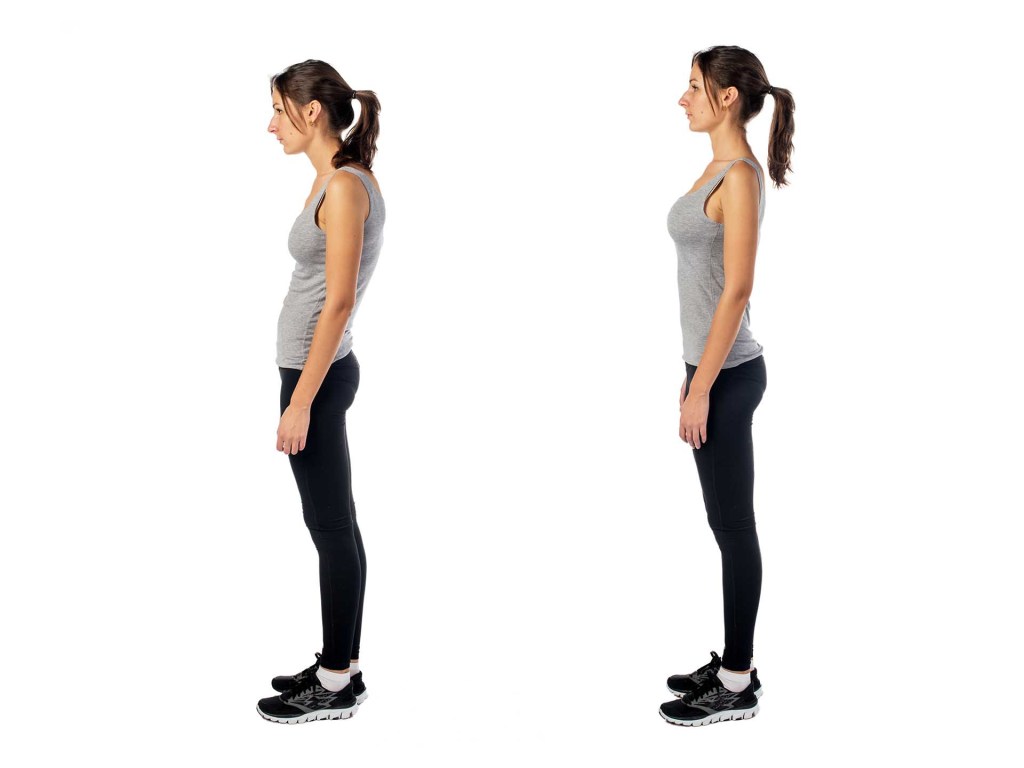
Good Posture
The head is sitting directly on top of the spine, neither forward nor back. The shoulder blades lie flat against the ribs. The spine retains its natural ‘S’ shape. The hips are correctly tilted in line with the legs and feet (just draw the tailbone down towards the floor to feel the pelvis tilt correctly). The knee joints are in line and not hyperextended. The body weight is distributed evenly across the whole foot.
Bad Posture
The head is too far forward, shortening the back of the neck. The shoulders are rounded forward, creating a curve in the upper back that tightens and shortens the muscles at the front of the shoulders and weakens the muscles of the upper back. The hips are tilted forward, putting strain on the movement of the spine and the hips, resulting in back pain. The abdominals are too relaxed and therefore weak. The gluteals at the back of the hip are weak and result in tight hamstrings at the back of the thigh. The knees are slightly hyperextended, putting too much body weight through the knees.
How to use this Pilates exercise programme
This programme is called a Pilates mat workout. Working from the floor is a great way to ensure the spine is in the best alignment possible from which to move the joints and strengthen the major muscles safely. This programme has been designed with the best Pilates exercises specifically for those who are completely new to Pilates and need an understanding of the basic principles.
How often can I do Pilates?
You can do Pilates every day if you wish – try setting a time that you stick to and make it a habit. All the exercises in this programme are at a low level so are a good introduction to Pilates. There are only 12 moves in this programme and they guarantee to keep the major joints supple and strengthen the key muscles – a really effective starter programme. Do the moves and exercises in the order shown as the positions flow together well.
The best Pilates exercises for beginners
Start by finding neutral
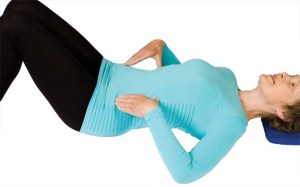
A
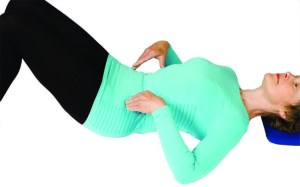
B
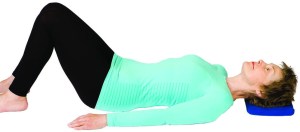
C
This position is also known as the relaxation position and is used at the start of most mat session in the early days of learning Pilates. Lie on your back with both knees bent, feet flat and hip-width apart, and arms at your side. Feel the weight is even on the feet and the tail bone (the sacrum) is heavy on the floor, the shoulders are relaxed and the back of the head on a small thin cushion or towel (a). Now place both hands with the thumb on the bottom of the ribs and the middle fingers on the hip bones (b). Print the back of the waist into the floor and feel the fingers move closer together, tilting the pelvis forward (c). You will feel a pull on the front of the hips and a tightening at the back of the hips. Now relax so all of that tension releases, tilting the pelvis back to a comfortable position for you. This is your neutral position.
Shoulder and hip mobility

Starfish
Lie on back in the neutral position (described above). Take a breath in and, as you breathe out, slowly take your left arm overhead and slide your right leg out along the floor. As the arm moves opposite to the leg try to keep the trunk still without letting the ribs flare up. Breathe in to bring them back and change sides. Do 8 times altogether.
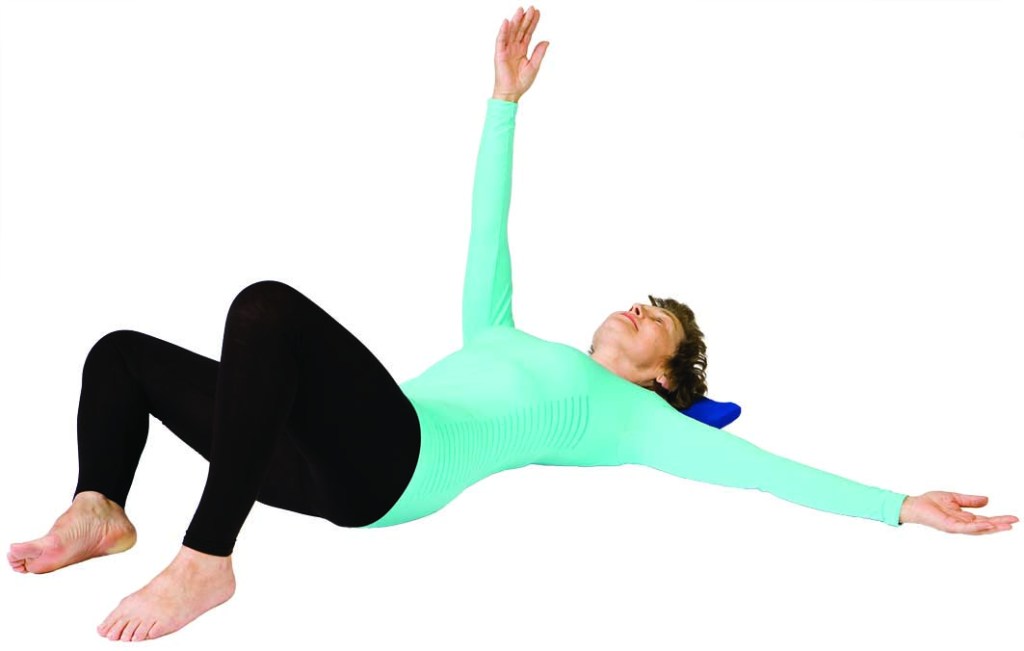
Single knee drop and arm opening
From the neutral position, bring both arms up above shoulders with palms facing each other and shoulder-width apart. Now breathe in and, as you breathe out, gently lower the left arm to the side and drop the right knee out at the same time in the opposite direction. Check the arm is in line with the shoulder and the feet are still hip-width apart. Come back to neutral and then change sides. Do 8 repetitions altogether.
Spinal stability
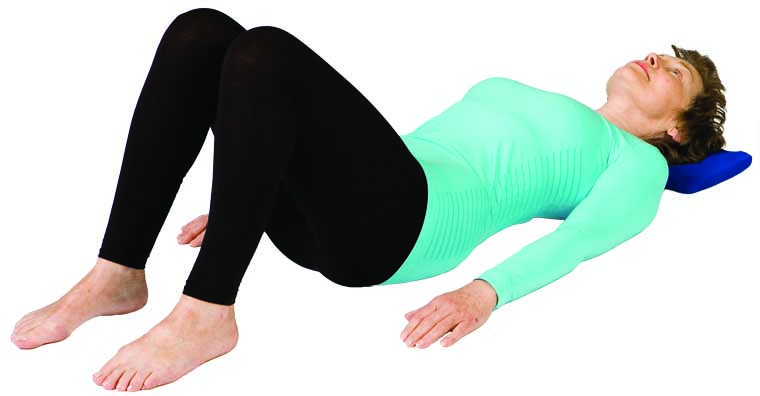
A
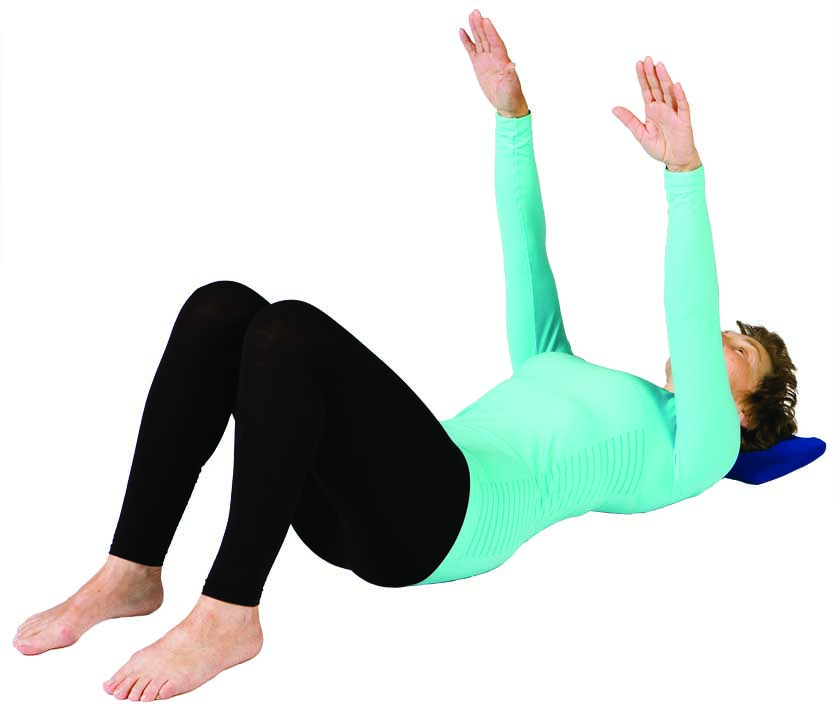
B
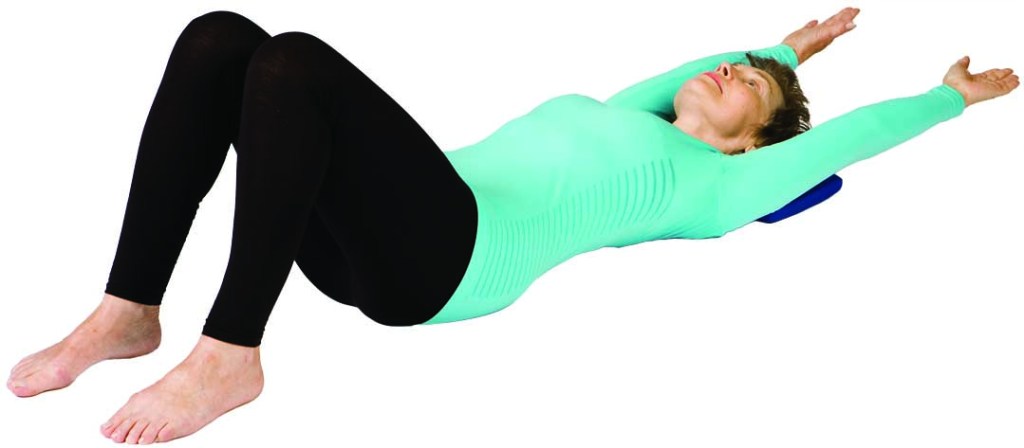
C
Ribcage closure
Begin in the neutral position with palms facing down and A reach the fingers forward along the floor to pull shoulders away from ears and to fix the shoulder blades (a). Breathe in as you lift the arms above the shoulders (b) and as you slowly lower the arms back, breathe out, keeping the ribs down, pulling towards the hips to avoid any movement in the spine. Do 6 repetitions.
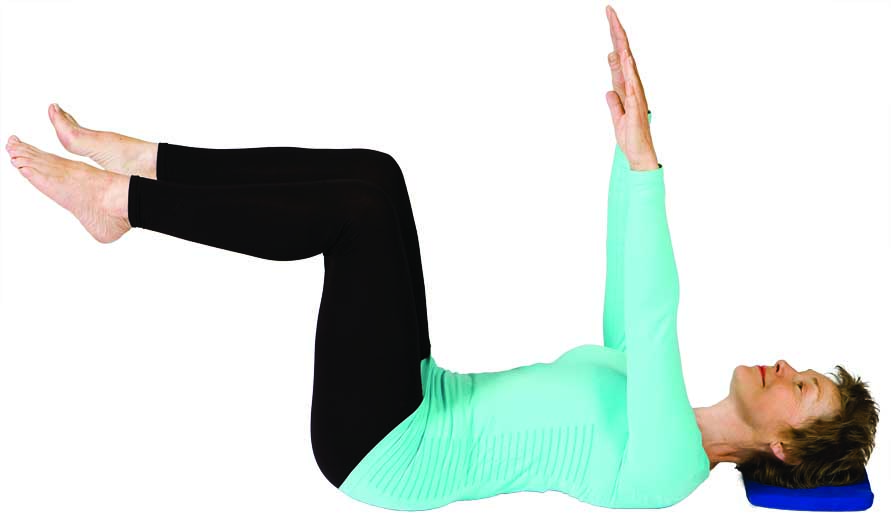
A
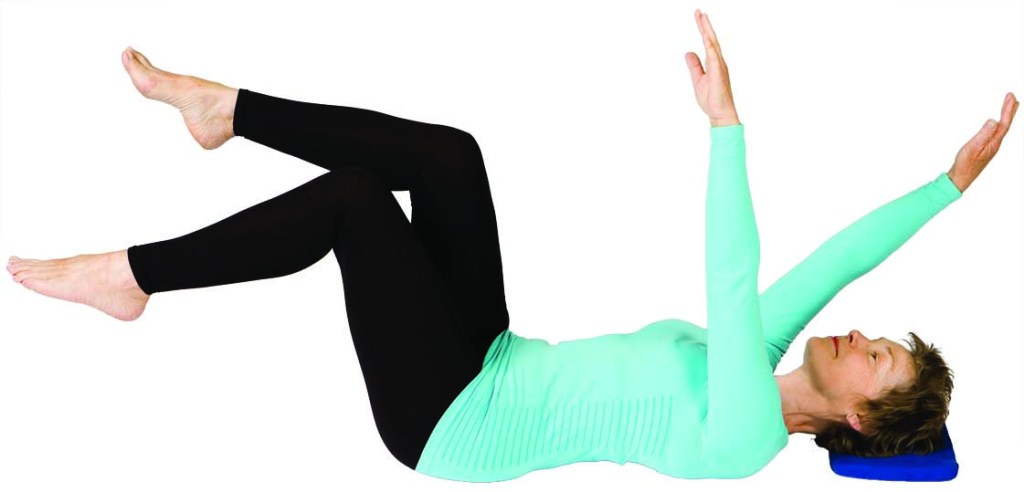
B
Dead bug
Lie on back and bring both legs and arms in the air at a 90-degree angle to the body (a). The knees are in line with the hips and the arms directly above the shoulders, palms facing forward. Now slowly take the right arm back just a few inches and the left leg forward a few inches (b). You will feel the core abdominal muscles working to hold your spine still. Keep changing sides and do 6 times altogether.
Spinal mobility
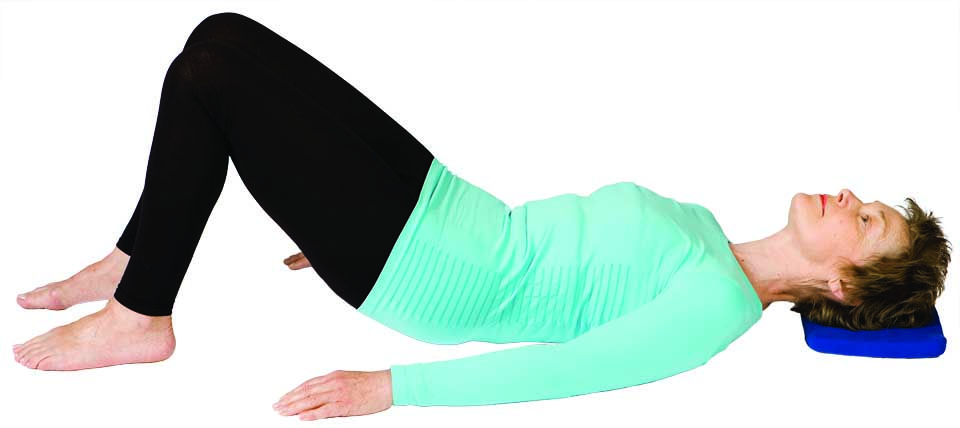
A
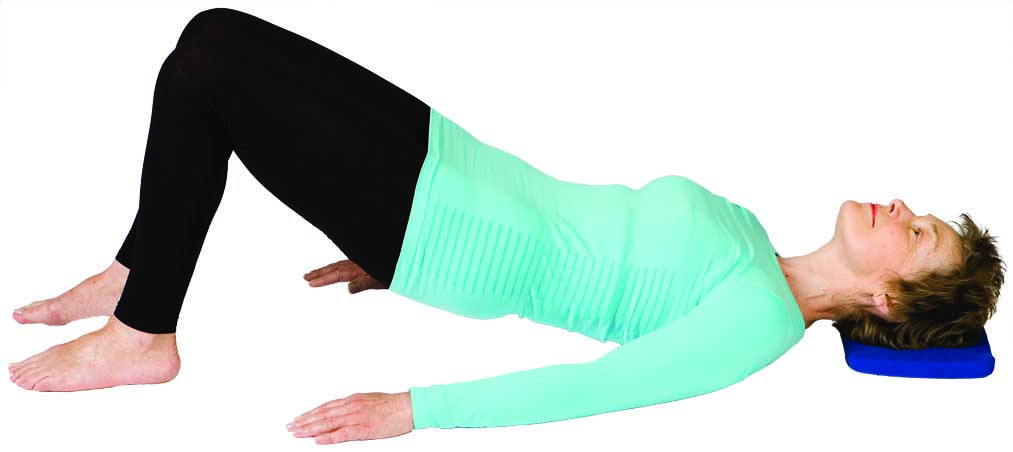
B
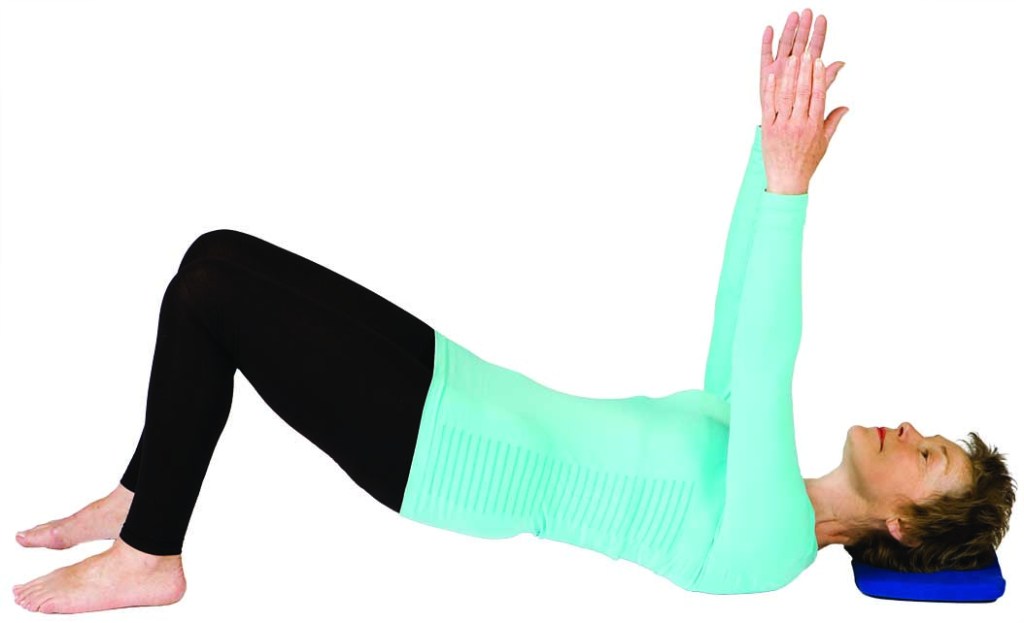
C
Spine roll with arm raise
Begin from neutral position and breathe in (a) then, as you breathe out, start the spinal movement with a pelvic tilt so you feel the back of the waist printing into the floor (b). Now continue to roll the spine up off the floor one vertebra at a time until you are feeling the weight in the feet and the back of the hips working hard to hold you up. Raise the arms above the shoulders (c). Breathe in again as you hold still and on the next out breath roll the spine back down again, one vertebra at a time. Do 6 times altogether.
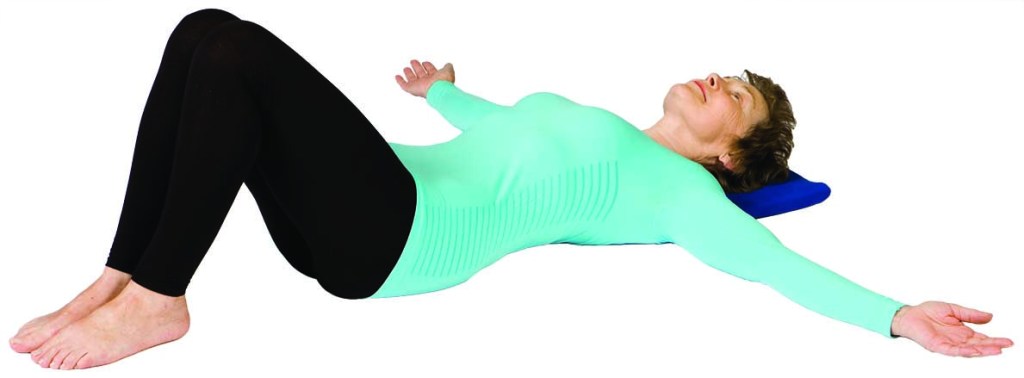
A
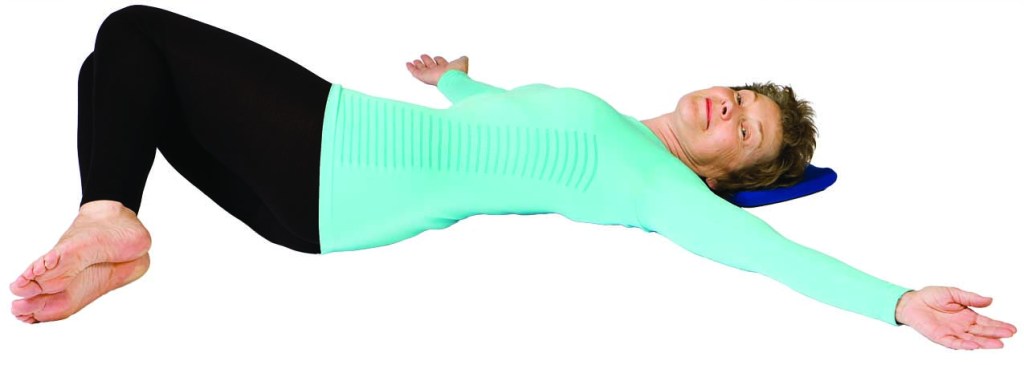
B
Hip roll
Begin with both knees bent with knees and feet together. The arms are out in line with the shoulders with the palms up (a). Take a breath in to prepare and then, as you breathe out, pull the tummy in and drop both knees to the right and turn the head to the left to rotate the spine (b). Keep the feet and knees together. Pause to breathe in and then bring the ribs back, then the waist and finally the hips and knees as you breathe out again. Keep changing sides and do 6 repetitions.
Spinal strength

A

B
Diamond press
Lie on front with both hands under forehead and elbows out in a diamond shape. Relax legs and gently pull the abdominals in a little to support the spine (a). Now breathe in and as you breathe out lift the head away from the hands pulling shoulders down and keeping the ribs at the front firmly connected to the floor (b). Pause to breathe in at the top of the movement and then breathe out again to slowly lower. Do 6 times.
Spinal stretch
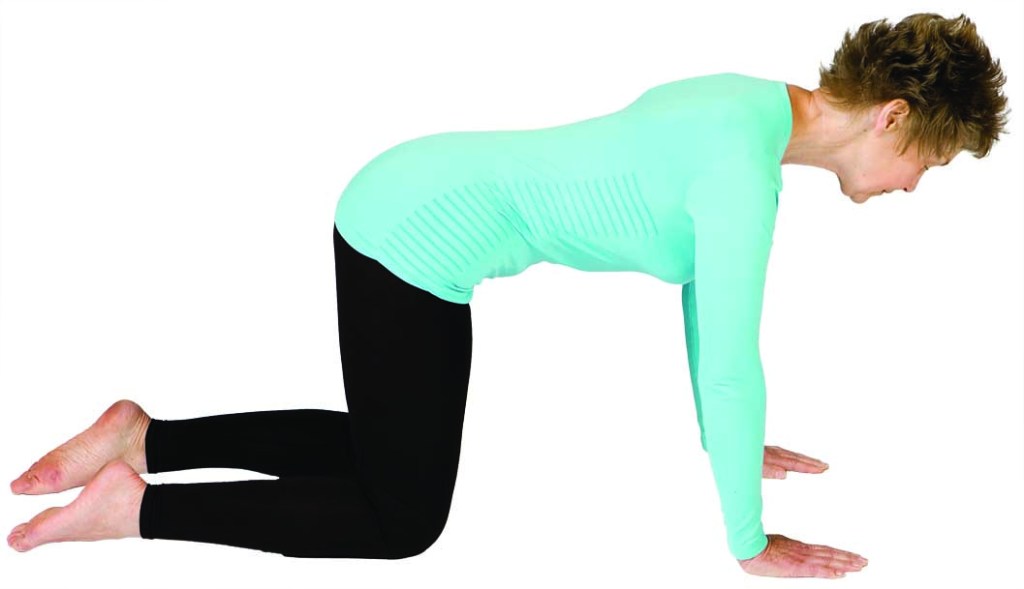
A
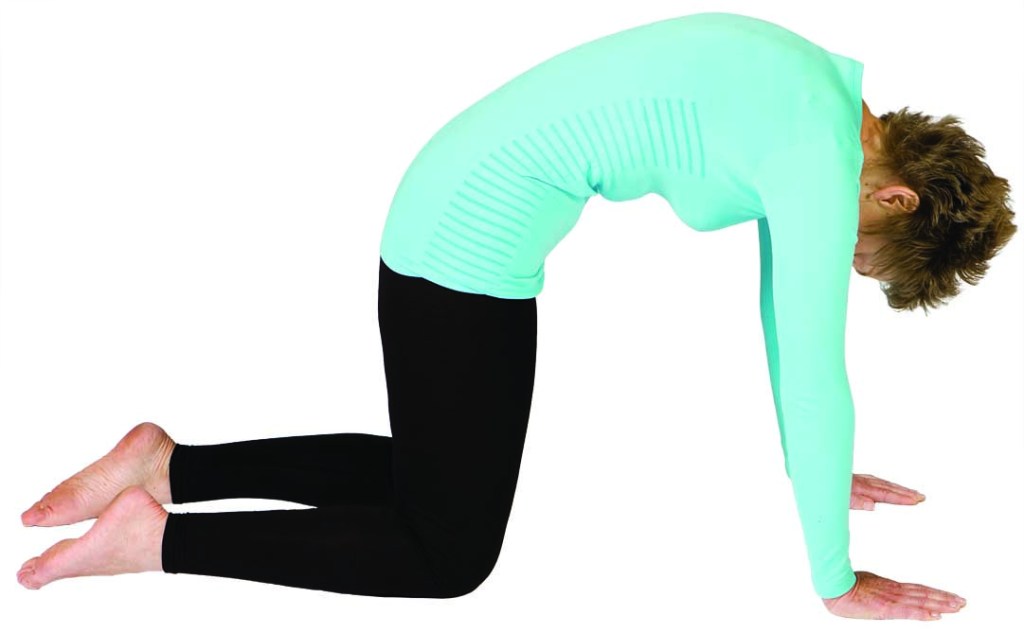
B
Come up on hands and knees with hands directly under shoulders and knees under hips. The head is held in line with the rest of the spine with shoulders away from ears (a). Breathe in and as you breathe out pull the abdominals in and arch the spine upwards still keeping the shoulders away from the ears and the head looking towards the pelvis (b). Hold to breathe in and the lower again as you breathe out.
Core Pilates exercises
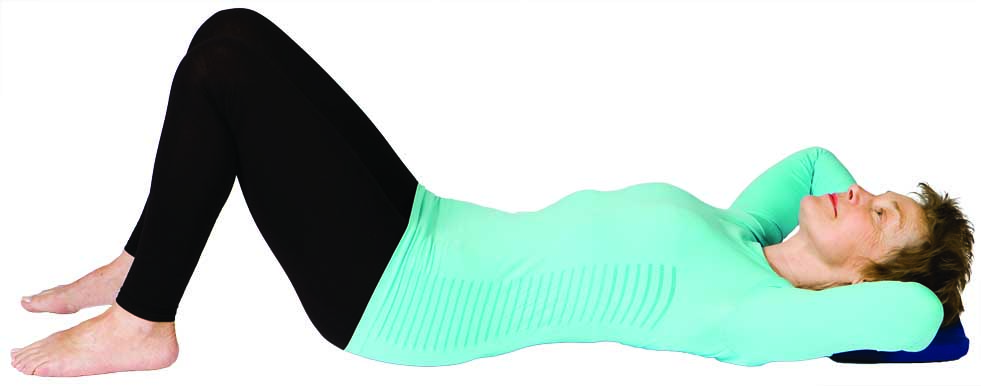
A

B
Perfect abdominal curl
Begin in the neutral position with the hands behind the head and fingers interlocked, creating a cradle for the head. The elbows are just in view (a). Breathe in and, as you breathe out, pull the navel in towards the spine and then nod the head forward slightly first. Then lift the head and shoulders just off the floor. Keep the chin off the chest and maintain the hold on the abdominals. Pause to breathe in and then, as you breathe out, slowly lower again. Do 8 repetitions.

Oblique curl with knee lift
Begin in the same position as for the previous exercise and breathe in to prepare. As you breathe out, pull in the abdominals and lift the left leg off the floor to a 90-degree position, at the same time twisting the trunk up, bringing the ribs on the right side towards the left thigh. Keep the upper body position of the head and elbows the same and think only of the twist from the ribs. Breathe in to lower and keep changing sides each time. Do 8 repetitions slowly.

A

B

C
Side-lying obliques
Lie on your side in a straight line with the head resting on the cushion or towel (a). Pull in the abdominals to help you balance and feel stable. Breathe in as you lift the top leg a few inches from the bottom leg (b) and breathe out as you bring the bottom leg up to connect fully with the top leg (c). Pause and hold as you breathe in again and then slowly lower as you breathe out. Do 6 times then change sides.
Deep hip strength

A

B
Oyster
Lie on side with the head resting on the cushion and with both knees bent at a 45-degree angle. The feet are in line with the hips (a). Now breathe in and, as you breathe out, lift the top knee away from the bottom knee but keep the feet firmly together and do not let the hips drop back (b). Lower again as you breathe in again and repeat 10 times altogether. Change sides.







